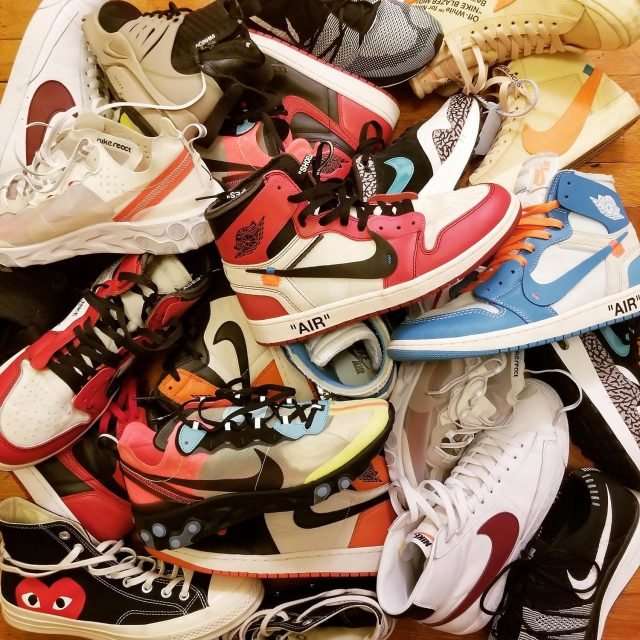A new exhibition at the Design Museum follows the evolution of the sneaker from sportswear staple to cultural icon. We look at how the marketing strategies of the biggest brands in the game have grown in tandem with the $80 billion industry.
It’s been approximately 2 decades since American shoemaker Wait Webster developed a method for cementing rubber soles to shoe uppers to make them more suitable for sporting activities.
The term “sneaker” didn’t even exist at the that point, and Webster’s initial idea has gone through numerous iterations since then, but he did lay the groundwork for one of humanity’s most universal design items, one that is now worn by millions of people every day.

The worldwide shoe market is now worth almost $80 billion, with major manufacturers like Nike and adidas launching thousands of new models each year in infinite colorways.
Sneakers, however, have become more than just a fashionable type of footwear; they have also become a cultural symbol of our day.
We get to delve into the tale behind the footwear revolution in Sneakers Unboxed, a new exhibition at London’s Design Museum, investigating sneaker culture’s colossal rise over the last four decades in particular.

“I did a show at the V&A in 2008 on fashion sportswear, and at that point I think people were not that ready for the subject matter. Whereas now I think people are very open to it in a way that they weren’t before, and I think that’s to do with the fact that it’s become a key part of everyone’s lives. Most people wear sneakers on a daily basis … so I think it’s a good time to explore where all that comes from,” says Ligaya Salazar, the show’s curator, who has worked in the cultural and museum sectors for the last 15 years.
The exhibition, which is divided into two sections, Style and Performance, traces the history and evolution of shoe design from being overwhelmingly sports-focused to how we know it today. It begins with early examples of John Boyd Dunlop’s Liverpool Rubber Company’s trainers, which resulted in Fred Perry wearing Dunlop’s now iconic Green Flash model at Wimbledon in 1929, as well as the story of Chuck Taylor, a traveling salesman who toured US high schools in the 1920s, teaching basketball and promoting his Converse All Star boots.
Youth culture isn’t only about trendy sneakers. They also like to be dressed in matching outfits. As a result, Jordan’s image is enhanced by a variety of T-shirts. Visit the links below if you’re interested in these items.
Air Jordan 11 Emerald Lows Matching Sneaker Tshirt

Air Jordan 1 Royal Toe Matching Sneaker Shirt

Air Jordan 10 I’m Back Matching Sneaker Shirt


